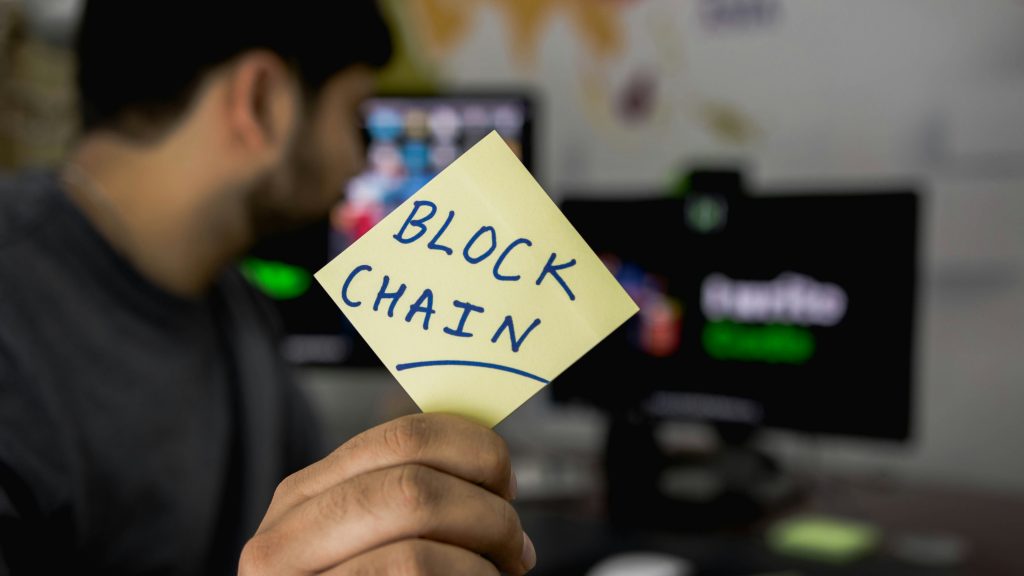You’ve probably heard the term “blockchain,” especially when people talk about cryptocurrency, NFTs, or digital security. But what does it actually mean? This article will explain blockchain in simple terms, so you can understand how it works, why it matters, and where it’s being used—without needing a tech background.

What Exactly Is Blockchain?
Blockchain is a special kind of database, but instead of storing data in one place, it spreads the information across many computers. This design makes it decentralized—no single person or company controls it.
A Simple Analogy
Imagine a shared digital notebook. Every time something happens—like a payment—it gets recorded as a line in that notebook. But instead of one person writing in it, thousands of people around the world keep identical copies. Everyone can see what’s written, and no one can change it without everyone else knowing.
How Blockchain Works
Here’s how blockchain technology functions in a few easy steps:
- A block records a group of transactions.
- Each block connects to the previous one, forming a chain.
- The system seals each block using a unique code called a cryptographic hash.
- Thousands of computers (called nodes) verify and store each new block.
Once the network approves a block, it becomes permanent. No one can alter or delete it.
Why Blockchain Matters
People use blockchain for more than just tech buzz. Here’s why it’s important:
- Security: Hackers can’t easily change information because it’s stored across a massive network.
- Transparency: Everyone can view the same information, which builds trust.
- No Middlemen: Blockchain processes transactions directly, often without banks or brokers.
- Efficiency: It handles transactions faster, with fewer fees and delays.
Where You’ll See Blockchain in Action
Although most people connect blockchain to cryptocurrency, it’s already showing up in many other industries:
- Cryptocurrency: Bitcoin and Ethereum use blockchain to manage and verify transactions.
- Supply Chains: Companies track where products come from and verify authenticity.
- Healthcare: Doctors and hospitals securely share patient records using blockchain.
- Voting: Governments explore using blockchain to prevent voter fraud.
- Digital Art (NFTs): Artists use blockchain to sell and authenticate digital creations.
Clearing Up Common Misconceptions
“Blockchain equals Bitcoin.”
Not quite. Bitcoin runs on blockchain, but many other platforms and industries use the technology in different ways.
“Blockchain is anonymous.”
Not always. Many blockchain systems show your transactions, just not your real name.
“Blockchain is too complex.”
The idea sounds technical, but at its core, blockchain just creates tamper-proof records that many people trust and share.
Is Blockchain the Future?
Many experts believe blockchain could reshape how people handle money, data, and even ownership. But like any new technology, it’s still evolving. Developers continue to solve challenges related to speed, regulation, and energy use.
Still, the idea of a transparent, secure, and shared system excites innovators around the world.
Conclusion
Understanding blockchain in simple terms shows that it isn’t just a high-tech mystery. It’s a smarter way to record, verify, and share information. Whether you’re curious about Bitcoin, concerned about online privacy, or exploring future tech trends, blockchain is worth knowing.
It won’t solve every problem, but it’s changing how people think about trust, transparency, and digital systems.
Focus Keyphrase:
Blockchain in simple terms
References:
- Nakamoto, S. (2008). Bitcoin: A Peer-to-Peer Electronic Cash System. https://bitcoin.org/bitcoin.pdf
- IBM Blockchain. (2023). What is Blockchain Technology? https://www.ibm.com/topics/what-is-blockchain
- MIT Technology Review. (2022). Explainer: Understanding Blockchain. https://www.technologyreview.com/2022/05/23/blockchain-explainer






